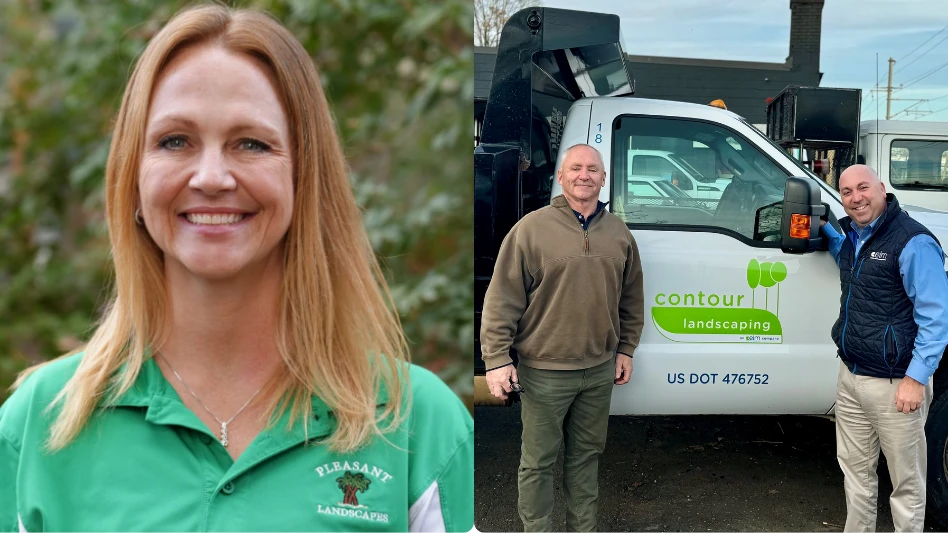
Soil testing can be the key that helps build a healthy lawn that can stand up to pesky weeks. Benjamin Moretta and John Benefield perform soil tests when prompted by a turf or vegetation problem either identified by the contractor or the customers.
“The only reason I would do soil testing is if I noticed decreased turf rigor,” says Moretta, owner of Moretta Lawn & Landcare, based in Canton, Ohio. “Or potentially just issues where the client would claim that they’ve thrown grass seed down and it just won’t germinate and it comes up and then it pewters out. I’ll check soil condition.”
Other signs of problems can include a lot of pine or oak trees which add acidity to the soil and can alter soil pH, he adds.
At Green Leaf Nursery, where Benefield works as lawn care specialist, soil testing is usually spurred by lawn renovation or a problem area. He says he sends his soil samples to his local university extension agency for testing.
Moretta sends his soil samples to his supplier, which then sends the soils for analysis by a third-party lab.
Why it’s important
Soil testing can help identify problems with turf that may not be visible to the naked eye. “It helps you see what nutrients are in the ground and what levels they’re at, and it helps you see what you need to add so that you can have the best possible turf,” Benefield says.
A soil test can also help reveal the makeup of a soil – whether it’s sandy soil, silty soil or clay soil. The type of soil can impact how well different types of grasses will grow, he says.
“Certain grasses won’t grow in certain soils. Bermuda grass can grow just about anywhere, but with the Fescue type grass, usually you won’t see that in a sandy soil, you see it more in a clay soil,” he says.
Soil testing is vital when there is a mysterious problem on the property, Moretta says.
“If you’ve got turf that loses color quick and clients complaining about how after the lawn was installed it just hasn’t looked right and it dries up really quick,” he says. “You can check soil profile with it as well so you can see if they have a layering issue or the contractor maybe back filled most of it with clay and then they came in and only put in an inch of top soil.”
How often to do it
Once soil testing is performed on a property, frequency of repeat testing will vary depending on how well the turf reacts to the prescribed changes.
“I mean, we’re going to get a recommendation back from the lab that tell us we need to put down a certain number of pounds of starter fertilizer per thousand square foot, a certain number of pounds of lime per thousand square foot, or maybe potash or maybe it’s a low nitrate level and they recommend some extra nitrogen or something,” Moretta says. “We follow the guideline from the lab itself.”
If the customer continues to complain or have problems in a certain area or over the entire property, soil testing will be repeated until the problem is solved.
“If it’s an issue with germination and grass is growing, and then we actually get it to establish and stay, it’s not until we see decreased vigor or client complaint that we go back in and do another soil test,” Moretta says.
Soil testing and amending is a continual process, Benefield says.
“Typically, what I do is if I take a test and we find a nutrient that needs to be added to it, we’ll make the recommendation to the customer and we’ll make the application,” he says. “If it needs extra phosphorus, we’ll make the application for them, and then we’ll come back maybe three months later and we’ll take another soil sample. Then we’ll reevaluate and see where we need to go from there.”
Once the initial problem is corrected, Benefield says he still recommends that property be soil tested every three to four years as a form of maintenance.
Latest from Lawn & Landscape
- LawnPro Partners acquires Ohio's Meehan’s Lawn Service
- Landscape Workshop acquires 2 companies in Florida
- How to use ChatGPT to enhance daily operations
- NCNLA names Oskey as executive vice president
- Wise and willing
- Case provides Metallica's James Hetfield his specially designed CTL
- Lend a hand
- What you missed this week





